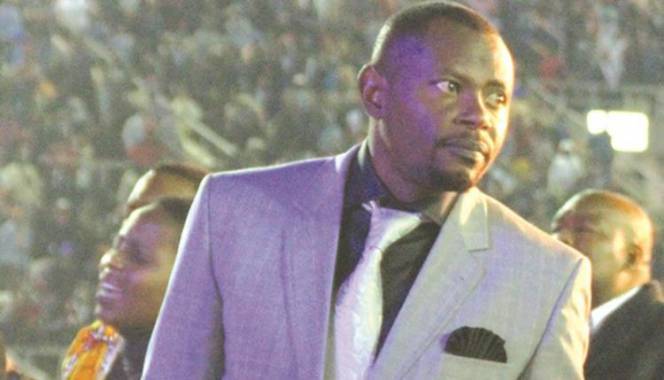
The Sunday Mail

Chisel The Debris
IN the Christian Greek Scriptures, there is a record that a possibly historical Yahoshua the Nazarene was tempted by Satan while he was in the wilderness (Luke 4:1-13 and Matthew 4:1-11).
To the enlightened, Satan is not humanoid but a psychological principle of ego, insolence, pride, destruction or decay.
According to one of the earliest Buddhist literature dating back to the 4th century BCE, Jataka 1:57, Siddhartha Gautama abandoned a life of royal privileges for enlightenment.
In the path to attain such enlightenment, Siddhartha studied contemplative silence under Brahmin teachers and then undertook fasting and extreme austerities.
Siddhartha is said to have gone through a 49 days’ fast. (Yahoshua is said to have gone through 40 days and 40 nights).
Siddhartha had a conflict with Mâra, the principle of destruction as “allegorical representations of the mental torment, conflict, and crisis experiences.”
The temptations are precisely similar to those of the Yahoshua as an initiate.
The first temptation by Mâra, the evil one, appeals to Siddhartha’s debased instinct related to base hunger. (Yahoshuais said to have been commanded to change stones into bread. He overcame the temptation by quoting Deuteronomy 8:3).
For the second temptation, Siddhartha is transported to the neighbourhood of a splendid city, which is made to revolve, like the “wheel of a potter,” and display its magnificence to test if he could conquer fear. (Yahoshua is said to have been asked to free himself from a pinnacle by jumping and relying on angels to break his fall. He overcame the temptation by quoting Deuteronomy 6:13).
The third temptation introduces a prominent feature to do with debased desire related to sexual lust.
Beautiful females, the daughters of Mara, come round him and triumphed over them.
(Yahoshua was tested about the base lust for power when he was asked to worship the devil in return for all the kingdoms of the world. He overcame the temptation by quoting Deuteronomy 6:16; 10:20).
“At one point in his life, the Tempter (Mara) comes to (Siddhartha) the Buddha and promises him all the kingdoms of the Earth.
“The Buddha rejects it all with the words: “I know well that I am destined to have a kingdom, but I do not desire an earthly one; I will achieve enlightenment and make all the world rejoice.”
Mara has to admit, “My power is at an end.” (Yahoshua) responds to the same temptation saying: “Away from me, Satan! For it is written: ‘Worship the Lord your (Divine), and serve (it) only.’ Then the devil left him….” – Rudolf Steiner, “Christianity as Mystical Fact” (1902).
After six years of fasting (taken allegorically), Siddhartha gave up after realising that these were not enough to make him discover a higher life.
Finally, taking with him some moderate amount of food, he retired to silence under the great Bo-tree, itself the Tree of Knowledge, until he attained supreme enlightenment and from then on he became the “enlightened one” (the Buddha).
(Yahoshua retreated into the desert). On the night of the full moon, after overcoming the attacks and temptations of Mara, the evil one, he reached enlightenment, becoming a Buddha at the age of 35.
“In ancient mysteries, after undergoing the first rite of initiation of cleansing by water, the neophyte was subjected to twelve consecutive trials or porbations called tortures designed to test his courage and endurance.
These trials or ordeals were undertaken within a telestic cave, suitably furnished for such initiation ceremonies. The twelve trials dramatically represented as many stages of self-conquest and purification, leading to sovereignty over self and attainment of wisdom. Evil powers symbolised as wild-beasts were impersonated by the officiating priests. The disciple must conquer the evil powers at each sage of the stages of his upward progress.” – “The Restored New Testament: A New Translation with Commentary, Including the Gnostic Gospels Thomas, Mary, and Judas” (2009) translated by Willis Barnstone.
After the battles with Mara and conquering him, there were dazzles from the sky and came down the voices saying:
“He hath overthrown the Banner of Pride.
He hath won the Triple Knowledge.
The aggregations of the seen world give place to the aggregations of the unseen world.
The King of Physicians with his heavenly amrita will dull all human pain and lead all flesh to Nirvana.
Having entered the City of Omniscience and become one with all the Buddhas.
He is now indivisible.”
By conclusion, this shows the possibility that either the scriptural temptations of Yahoshua were a theft from long existing narratives of ancient Egypt, India and Persia or that as a mysteries initiate, he went through a universal experience as that of the priestly hierophants of ancient Egypt, the Brahman sages of India, the Zoroastrian Magi (the learned and wise) of Persia, the Chaldeans of Babylonia, and the Essenes of Palestine.
Resources:
‘What They Never Told in History Class’, page 187, by Indus Khamit Kush
‘The Ancient Egyptians’ by Professor Elliot G. Smith
The Light of Asia by Sir Edwin Arnold;
Christianity and Mythology by John M. Robertson;
Christianity before Christ by John Jackson
Bible Myths Chapter 29 by T.W. Doane
India in Primitive Christianity by Arthur Lillie
For feedback email, [email protected] or tweet @shingaiRndoro. A gallery of previous articles is found at www.sundaymail.co.zw/author/shingairukwata.



